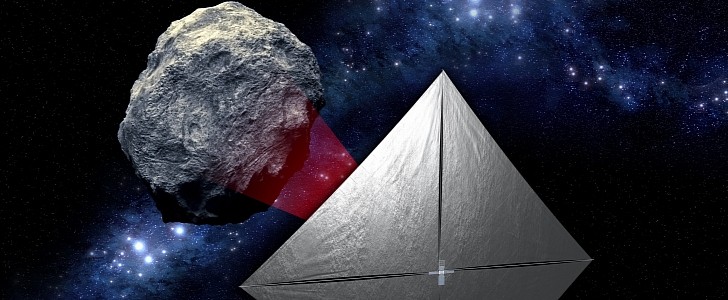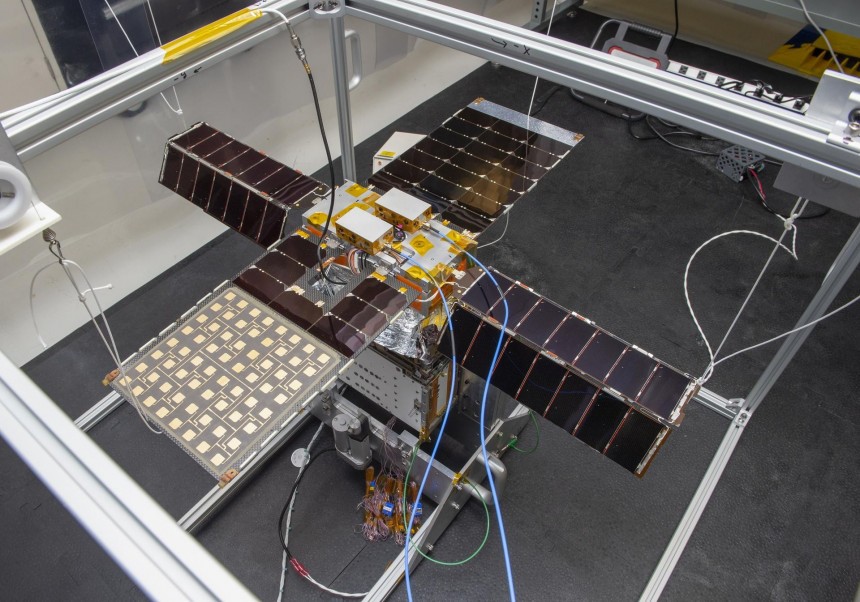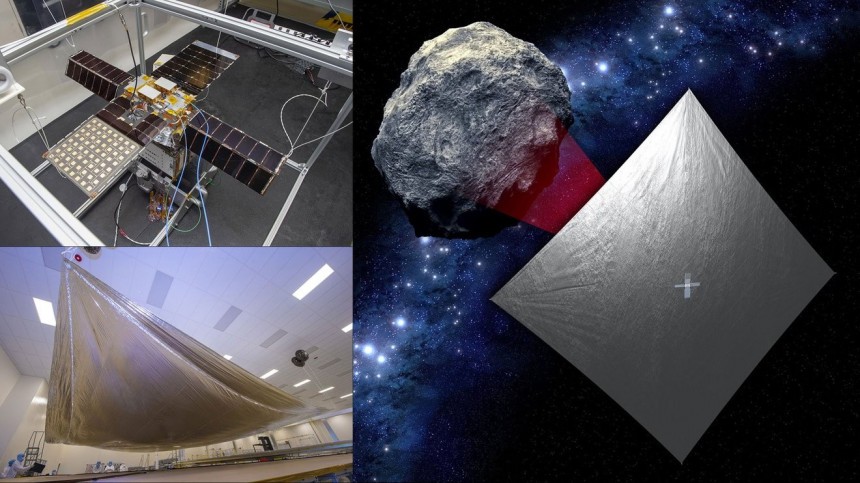NASA's NEA Scout is a tiny spacecraft with a big goal for 2022. Right now, the spacecraft is preparing for a memorable journey that will get it closer than ever to a near-Earth asteroid. First, NEA Scout will ride on the agency's powerful Space Launch System (SLS) Moon rocket that will reach the Moon. Then, it will harness the Sun's energy to get to its final destination.
No bigger than a shoebox, Near-Earth Asteroid (NEA) Scout's job is to study small asteroids that could someday pass by our planet. This class of cosmic objects measuring less than 330 feet (100 meters) hasn't been properly studied by scientists.
Although small, some near-Earth asteroids could pose a serious threat to this blue ball that we're living on. Back in 2013, an object belonging to this class exploded over a Russian city and injured more than 1,600 people.
The number of such asteroids detected has increased in the past years, and there's no certain way of knowing when the next one could strike. Therefore, understanding more about this class could help researchers come up with more strategies for minimizing the damage they may cause in case of collision.
NASA's NEA Scout is already getting ready to have a close-up encounter with one of these space rocks and gather as much information as possible. First, it will get aboard NASA's SLS rocket, which is set to take off this year as part of the Artemis I mission.
For those of you who might not know, NASA plans to kick off humanity's return to the Moon – and it will do it with the launch of the Artemis I mission, the first integrated flight of the agency's mega Moon rocket and its Orion spacecraft. The flight, which is expected to take place this March, will be uncrewed, and it will test the systems that should keep astronauts safe on future Artemis missions.
The rocket is set to take off from the Kennedy Space Center in Florida. It will orbit the Moon one and a half times and then head back home. But before the rocket plunges back into our atmosphere, NEA Scout will get off and continue its space trip towards its final target: an asteroid smaller than a school bus called 2020 GE.
Once in space, the tiny spacecraft will unfurl its much bigger solar sail, which is a plastic-coated aluminum film thinner than a human hair. Initially, it will use its cold gas thrusters to get set on the right path to the asteroid. Then, the mirror-like solar sail will generate enough energy to keep NEA Scout moving by reflecting sunlight.
Sailing on light is a type of propulsion that works well for small spacecraft that are not able to carry large quantities of traditional rocket fuel. Over time, this constant push given by the Sun's energy will take NEA Scout to higher speeds, and it will allow it to catch up with 2020 GE.
This will be the first interplanetary mission of this kind, where solar sail propulsion will be used to reach a near-Earth asteroid.
"There have been several sail tests in Earth orbit, and we are now ready to show we can use this new type of spacecraft propulsion to go new places and perform important science," said Les Johnson, principal technology investigator for the mission.
NEA Scout's journey will last two years in total. The 2020 GE will get close to us next year, in September. By that time, NASA's spacecraft will have gained enough speed to reach the asteroid.
Once it gets at about a mile above its surface, it will use a camera to analyze the object. It will be the first time scientists will have close-up images of the 2020 GE. This will also allow them to see what the asteroid is made of (whether multiple rock chunks make up its surface or if it's a single boulder) determine its rotation and its size. The overall encounter will help them understand more about this class of asteroids.
Although small, some near-Earth asteroids could pose a serious threat to this blue ball that we're living on. Back in 2013, an object belonging to this class exploded over a Russian city and injured more than 1,600 people.
The number of such asteroids detected has increased in the past years, and there's no certain way of knowing when the next one could strike. Therefore, understanding more about this class could help researchers come up with more strategies for minimizing the damage they may cause in case of collision.
NASA's NEA Scout is already getting ready to have a close-up encounter with one of these space rocks and gather as much information as possible. First, it will get aboard NASA's SLS rocket, which is set to take off this year as part of the Artemis I mission.
The rocket is set to take off from the Kennedy Space Center in Florida. It will orbit the Moon one and a half times and then head back home. But before the rocket plunges back into our atmosphere, NEA Scout will get off and continue its space trip towards its final target: an asteroid smaller than a school bus called 2020 GE.
Once in space, the tiny spacecraft will unfurl its much bigger solar sail, which is a plastic-coated aluminum film thinner than a human hair. Initially, it will use its cold gas thrusters to get set on the right path to the asteroid. Then, the mirror-like solar sail will generate enough energy to keep NEA Scout moving by reflecting sunlight.
Sailing on light is a type of propulsion that works well for small spacecraft that are not able to carry large quantities of traditional rocket fuel. Over time, this constant push given by the Sun's energy will take NEA Scout to higher speeds, and it will allow it to catch up with 2020 GE.
"There have been several sail tests in Earth orbit, and we are now ready to show we can use this new type of spacecraft propulsion to go new places and perform important science," said Les Johnson, principal technology investigator for the mission.
NEA Scout's journey will last two years in total. The 2020 GE will get close to us next year, in September. By that time, NASA's spacecraft will have gained enough speed to reach the asteroid.
Once it gets at about a mile above its surface, it will use a camera to analyze the object. It will be the first time scientists will have close-up images of the 2020 GE. This will also allow them to see what the asteroid is made of (whether multiple rock chunks make up its surface or if it's a single boulder) determine its rotation and its size. The overall encounter will help them understand more about this class of asteroids.








